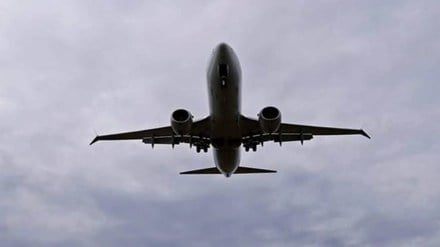It is somewhat of an irony that the world’s fastest-growing aviation market—one which holds tremendous promise for carriers—should see the death of two airlines within a few years. After Jet Airways shut down operations in April, 2019, Go First said on Tuesday it was filing for bankruptcy after being compelled to ground half of its 50-strong Airbus A320neo aircraft fleet. The no-frills carrier has been struggling for some time now, as is evident from the erosion of its net worth by Rs 3,222 crore at the end of March, 2022. Unfortunately, it has been plagued by engine problems following the inability of Pratt and Whitney to supply replacement engines. This has cost it revenues worth around Rs 10,000 crore.
While the government has offered airlines support in the form of the Emergency Credit Line Guarantee Scheme (ECLGS), and Go First is understood to have availed itself of Rs 800 crore, this was clearly not enough to keep its planes flying. Fewer flights have meant its average market share in January and February dropping to 8.2%, the lowest level in seven years. That, in turn, translated into smaller cash flows creating a sort of vicious cycle. Clearly, the promoters are not willing to infuse any more capital, for which they can’t be blamed. Aviation is a tricky business in the best of times and highly susceptible to rising crude oil prices. Go First managed to stay afloat all these years—it kicked off operations in 2005—but the pandemic dealt all carriers a body blow. The stronger airlines have recovered, but Go First clearly couldn’t cope with the additional pressure of engine shortages. Just staying afloat somehow isn’t enough for an airline business; it has to keep growing to create economies of scale—something Go First could never do.
Another airline, SpiceJet, is also in deep financial trouble; its net worth at the end of March 2022 was a negative Rs 4,340 crore and the losses before tax in the four years to March 2022 were more than Rs 3,870 crore. The airline has been forced to ground some Boeing 737 Max aircraft. Despite the ECLGS scheme, which was modified last year to help airlines, SpiceJet is understood to be facing working capital issues. It is believed to be operating just about 44 planes currently with around 25 aircraft grounded, partly due to supply-chain challenges.
It is unfortunate that Jet Airways ended up in the bankruptcy court and that it could not be revived even though there were interested buyers, some with deep pockets, because of the strange reluctance of bankers. Had the bankers spotted and red-flagged the weaknesses in Jet before it piled up losses of Rs 5,536 crore in 2018-19 and ran up a debt of Rs 8,400 crore, the story might have turned out differently. These are all big businesses employing thousands of people and can’t be allowed to fail. While GoFirst may have been a relatively small player in the Indian skies, it nonetheless provided a useful service. With GoFirst gone and SpiceJet struggling, the country’s aviation market is virtually turning into a duopoly. That cannot be good for passengers. In fact, Indigo is miles ahead of Air India, which will take a while before it builds up a comparable domestic network. The Tatas may have placed orders for 470 aircraft but it could take a few years before these are in operation. Until then, with a share of about 50%, Indigo will rule the skies.
